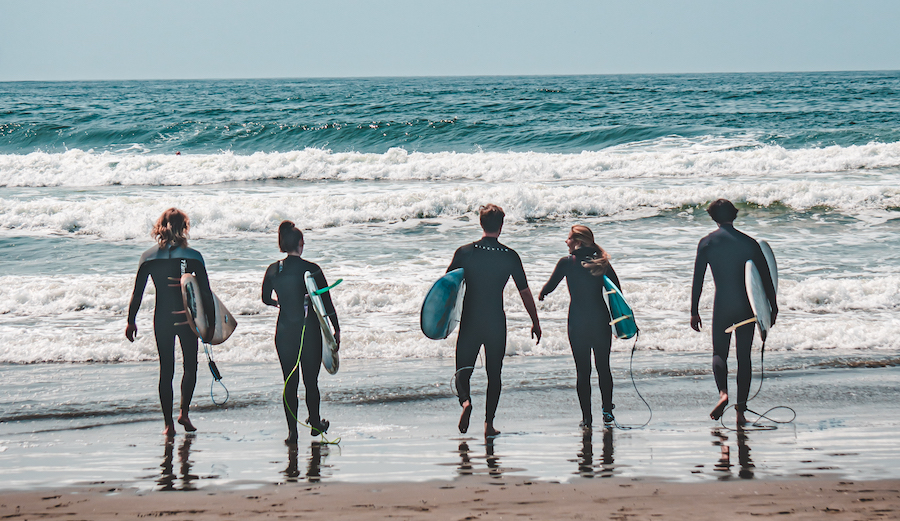
Catching waves is only one aspect of surfing; another is being prepared both emotionally and physically to give your best effort. Surf fitness is a major factor in how well you surf and how much you like it, regardless of your level of experience. Because the water is unpredictable, your body must be resilient, strong, and flexible to withstand its difficulties.
So, how can one become more fit for surfing? There’s more to it than running on the beach or performing push-ups. Strength, endurance, mobility, and balance are all necessary for surfing because of the sport’s particular movements and requirements.
Here’s how to develop a body that’s ready for surfing as well as the beach.
1. Build Paddling Endurance
Why it matters:
One of the most energy-intensive aspects of surfing is paddling. The majority of your session will be spent placing yourself, chasing waves, and paddling out.
Exercises to try:
- Regularly swim laps, concentrating on breaststroke and freestyle.
- To simulate paddling at home, use resistance bands.
- To increase your endurance, try sprint paddling on your board in flat water.

2. Strengthen Your Core
Why it matters:
Being able to pop up or carve through a wave with balance, stability, and control is much easier with a strong core.
Exercises to try:
- Side planks and planks
- Twists in Russian
- Leg lifts that hang
- Rollouts of stability balls

3. Train Functional Strength
Why it matters:
Power, body control, and explosive movements are all necessary for surfing. You can move more effectively and react faster if you have functional strength.
Exercises to try:
- The pull-up and push-up
- Kettlebell or dumbbell squats
- Both lunges and deadlifts
- TRX exercises using body weight

4. Improve Mobility and Flexibility
Why it matters:
Your pop-up and general performance may be restricted by tight hips, rigid shoulders, or an inflexible spine. Additionally, mobility helps to avoid injuries.
Exercises to try:
- After each workout or surf, stretch.
- Incorporate mobility flows (such as animal movements) or yoga.
- To relax tense muscles, use foam rollers.

5. Enhance Your Balance
Why it matters:
For surfing, balance is an essential skill. You will have better control on the board if you are more stable.
Exercises to try:
- Training using a balance board or BOSU ball
- Squats on one leg
- Drills tailored to surfing, such as pop-up practice on land
- Surf skating or skateboarding

6. Boost Cardiovascular Endurance
Why it matters:
Good aerobic fitness is essential for a longer, more energetic surf session. It also facilitates faster wave-to-wave recovery.
Exercises to try:
- Swimming
- Jogging on a trail or running
- HIIT, or interval training
- Leap rope

7. Mimic Surf Movements
Why it matters:
Your body performs better in the water when you train in a way that mimics actual surf actions.
Exercises to try:
- Pop-up land drills
- Circuits tailored to surfers (brief bursts of intense motions)
- Shadow surfing is a technique where you move as though you’re catching a wave.

8. Rest and Recovery Matter Too
Why it matters:
At rest, muscles develop and change. Burnout, injury, and exhaustion can result from overtraining.
Exercises to try:
- Obtain restful slumber.
- Consume a healthy, well-balanced diet.
- Drink plenty of water both before and after surfing.
- To recuperate, take ice baths, get a massage, or stretch.

Final Words
Increasing your surf fitness doesn’t need you to become a gym rat; rather, it calls for intentional training that incorporates exercises that increase your strength and self-assurance in the water. You will be able to paddle longer, pop up faster, and ride waves with greater power and style if you have the proper balance of endurance, strength, mobility, and recuperation.
